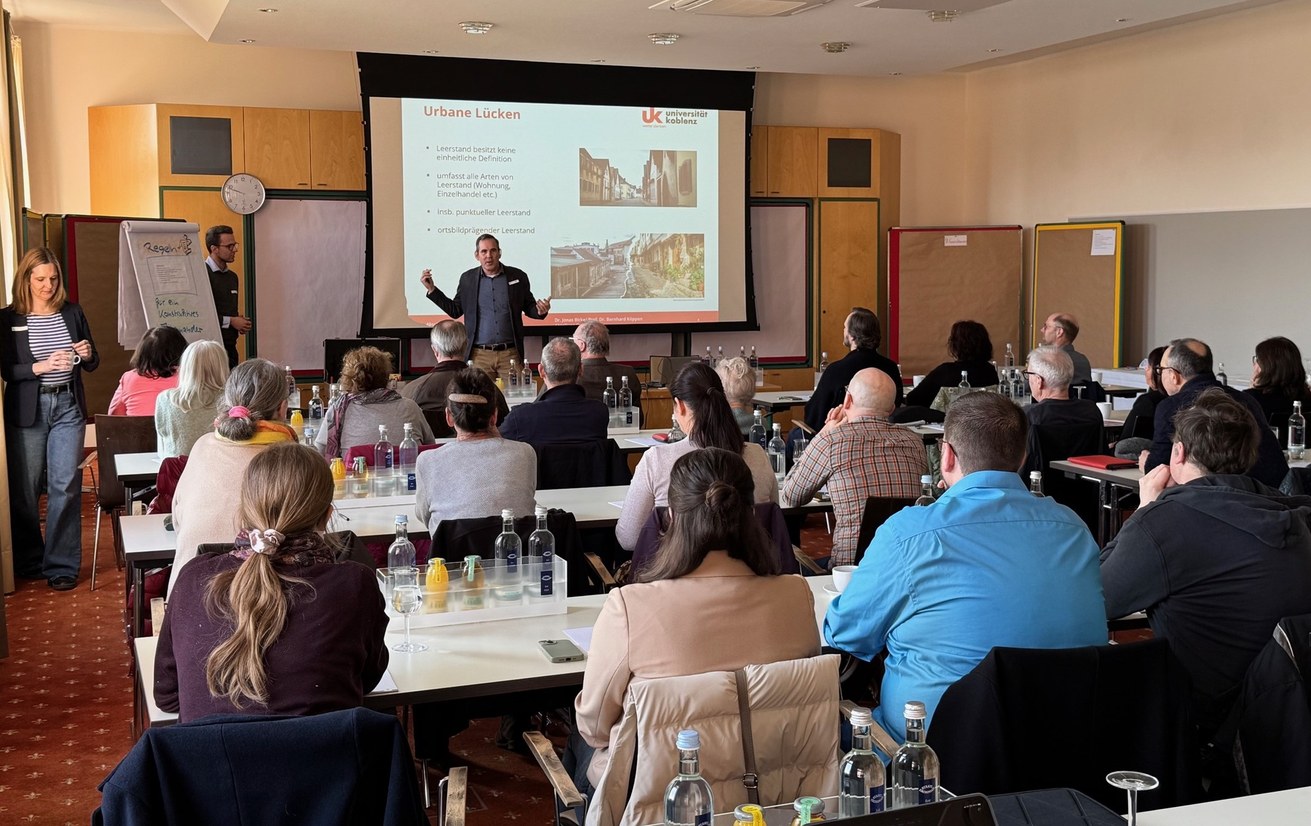UNIVERSITY OF KOBLENZ
Universitätsstraße 1
56070 Koblenz

Under the leadership of Dr Jonas Birke (Geography Division, University of Koblenz) and Dr Miriam Voigt (Transfer Team, University of Koblenz), the Hans Sauer Foundation-funded project relied on close cooperation between academia and civil society. Around 30 citizen scientists contributed their expertise to all four project phases - from preparation and mapping to analysing the background and developing solution strategies. Local knowledge of local residents is a central, but so far rarely mobilised potential in research to precisely determine the reasons for vacancies and identify new opportunities.
Among other things, the project recorded the so-called "urban gaps" in the municipalities of Oberwesel, St. Goar, St. Goarshausen and Bacharach involved in the project. These urban gaps include both completely vacant and only partially utilised buildings as well as undeveloped plots of land. An inspection of the four municipalities revealed that of the more than 3,400 existing buildings, in around ten per cent of all cases the buildings are completely or partially vacant or plots of land are undeveloped. Another finding: 61 per cent of the mapped vacant properties in the municipalities surveyed are in a state of severe need of refurbishment, and around 82 per cent of these buildings were built before 1950. The surveys also revealed a clear spatial concentration of vacancies: the majority of the urban gaps, around 70 per cent, were recorded in the respective town centres, with only 18 per cent on the outskirts.
Research into the reasons for vacancies
The project managers also researched the causes of the identified vacancies. In interviews with residents, structural defects, difficulties with letting, deceased owners (and therefore unresolved ownership issues) and business closures were mentioned most frequently. A lack of utilisation ideas also complicates the situation in the municipalities in the Middle Rhine Valley. In addition, socio-economic factors such as seasonal fluctuations, inadequate infrastructure and the lack of leisure facilities in the municipalities of the Upper Middle Rhine Valley - combined with the often considerable distance between home and place of work - contribute to the fact that interest in renting remains low.
The insights gained also open up new perspectives for the future use of the existing buildings. As part of the citizen science project, possible uses discussed with the citizens involved included conversion into living space, use as holiday flats and interim use for cultural events such as readings and art exhibitions. Another finding of the project was that owners are generally willing to make buildings available for innovative utilisation concepts. Innovative ideas for subsequent uses such as escape rooms, co-working spaces or fitness studios were also mentioned.
"High demand for information and increased dialogue"
"Although the issue of vacancies has played a role in the municipalities involved in the project for years, there is still a great need for information and an increased exchange between all players and also between the different municipalities," summarises project manager Dr Jonas Birke, who emphasises the particular added value of the participation of interested citizens. "People often only think about the structural aspects of vacant properties. However, our project has shown that many social and economic factors also play a role. By combining a scientific methodological approach with local expert knowledge, we were able to gain a comprehensive understanding of the vacancy phenomena," says Birke.
Dr Miriam Voigt adds: "With the successful degree of the project, the participating municipalities now have a sound data basis. The University of Koblenz plans to further strengthen the resulting networks and utilise the knowledge gained in follow-up projects at both regional and supra-regional level. With a view to the Federal Horticultural Show 2029, the aim is to make a sustainable contribution to revitalising the affected city centres and creating vibrant communities."